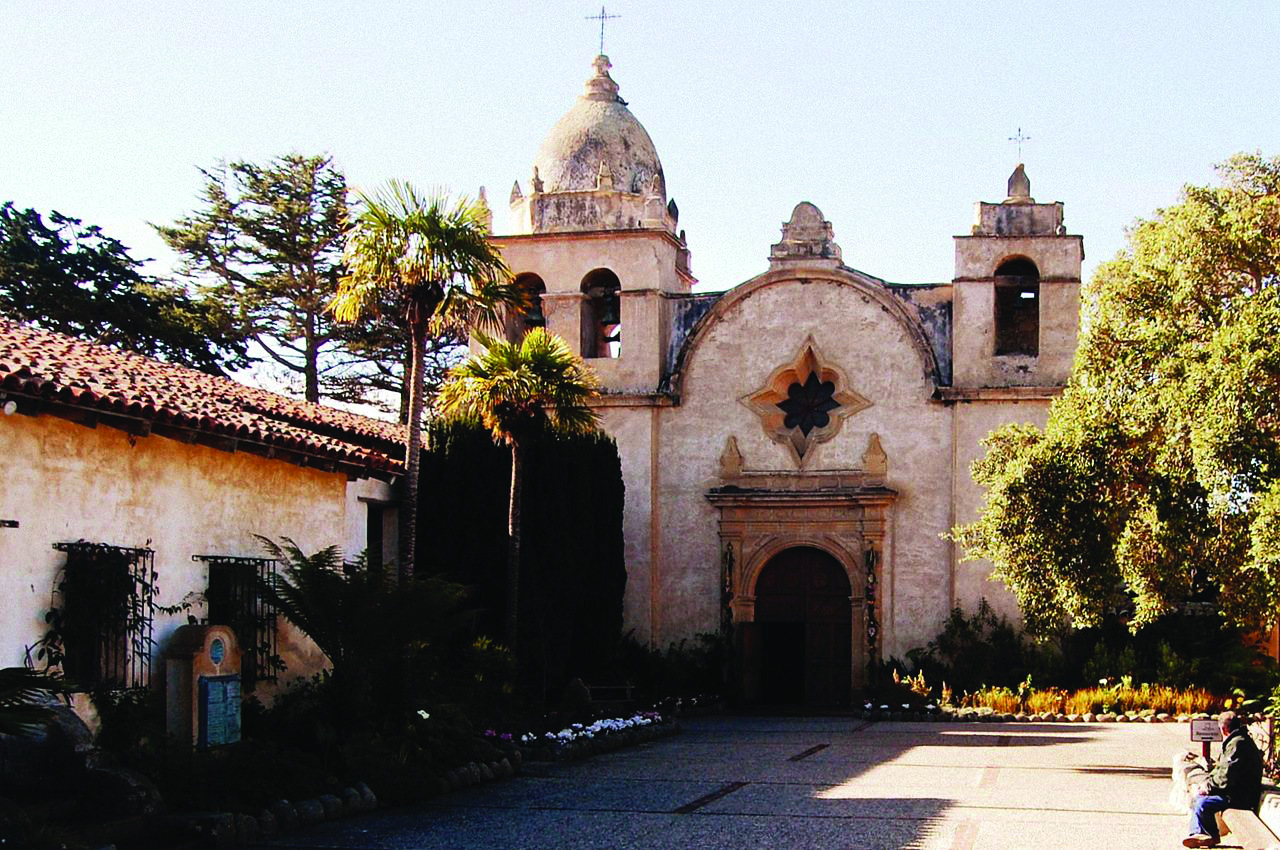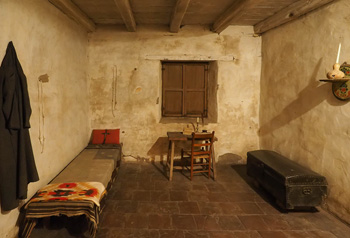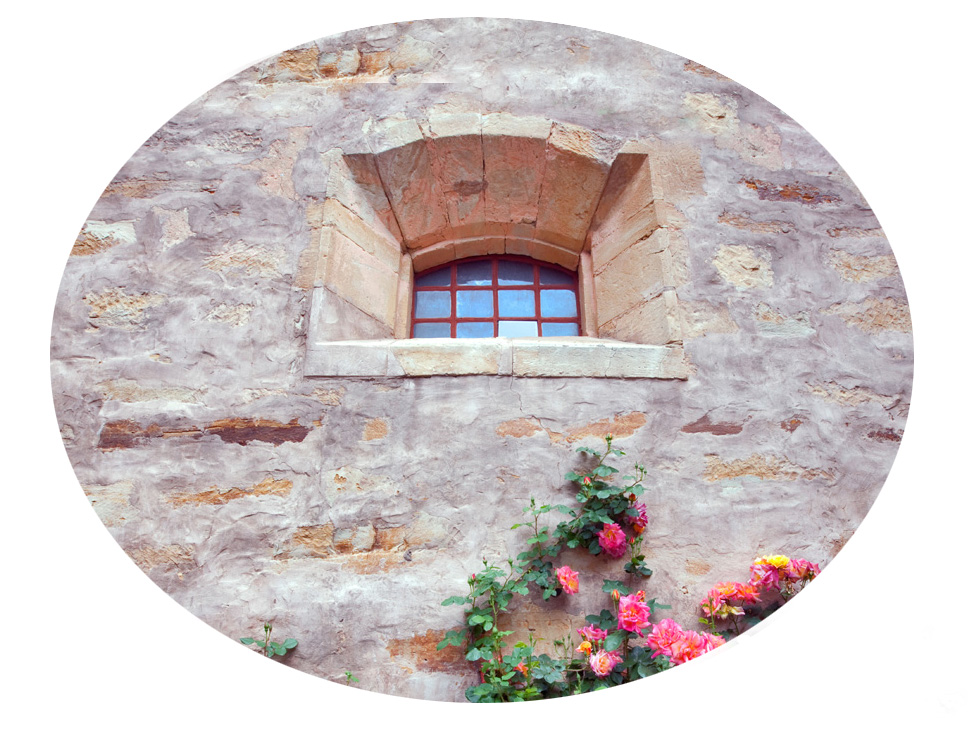 |
 |
Book Information
Discovering Our Lady of Bethlehem:
Her Journey with Fr. Serra
Judith Fife Mead & Marian Therese Horvat, Ph.D.
To discover Our Lady of Bethlehem is to find an important part
of our American Catholic History!
Discovering Our Lady of Bethlehem brings to American Catholics the fascinating history of the oldest statue of the Virgin Mary in California.
This life-size statue of Our Lady carrying the Christ Child accompanied the Sacred Expedition of 1769, the Spanish maritime expedition to Alta California that planted the Cross and Royal flag in the port cities of San Diego and Monterey. New Spain was larger by a 750-mile coast, a feat accomplished by a small troupe of soldiers and handful of friars.
Heading those friars was the indomitable Franciscan Fray Junípero Serra. His story is closely intertwined with that of Our Lady of Bethlehem, who found her home with him at Mission San Carlos Borromeo in Carmel-by-the-Sea. Under her patronage, Fr. Serra founded the first nine of the 21 Spanish Missions.
In this book you will find the story of Our Lady of Bethlehem; how she came to accompany the Sacred Expedition; how she presided over the successful California Missions; how she was exiled during the sad period of secularization and how she was lovingly returned during the Mission restoration in the mid-1900s.
Today she is fully restored, regal and maternal, in the side Chapel of San Carlos Borromeo Church. There she waits, showing herself most expressive and willing to receive pilgrims and visitors.
Here is your opportunity to learn about one of the oldest devotions to Our Lady in America. A fascinating and moving story that gives a glimpse of the original plan of God for California - and America!
Below you will find the Table of Contents to
Discovering Our Lady of Bethlehem
and the Foreword
Four-page color insert with photos of the Mission and Our Lady of Bethlehem
Format: Paperback, 80 pp. (A-33)
Publisher: Tradition in Action, Inc., Los Angeles, CA
Publication Date: October 2017
Price: $ 10

Table of Contents
Foreword: Visiting Our Lady of Bethlehem - read here
Prayer to Our Lady of Bethlehem
Chapter I: Her Roots in Spain and Portugal
Chapter II: The Plan to Found the California Missions
Chapter III: She Begins to Conquer California
Chapter IV: Carmel Mission, Our Lady of Bethlehem’s Final Home
Chapter V: Facing the Obstacles
Chapter VI: Fr. Serra’s Last Days
Chapter VII: Secularization & Exile of Our Lady of Bethlehem
Chapter VIII: Restoration of Carmel Mission Chapter IX: Our Lady of Bethlehem: “The Ideal of Consecrated Motherhood”

Foreword: Visiting Our Lady of Bethlehem
Perched atop a little knoll with a breathtaking view of the Pacific Ocean sits a colonial adobe structure that brings to mind the baroque monasteries in villages of Western Europe. The bell tower of the alluring church rises high above the other buildings. In the distant verdant pastures sheep are grazing. This idyllic site is the home of San Carlos Borromeo Mission,
the second founded by Padre Junípero Serra in beautiful Carmel-by-the-Sea.

The Mission Church of San Carlos Borromeo
|
During his 15 years in Alta California, Carmel was the headquarters of the successful network of missions that eventually numbered 21. It was Fr. Serra’s preferred mission: the temperate climate, the fragrant roses and pungent pine trees, the mountains on the east and the ocean on the west all brought back memories of his youth on the Island of Mallorca,
which travelers have described as “The Enchanted Isle.”
A similar entrancing atmosphere captures the heart of visitors in this small bay town in middle California. In Carmel, you sleep and eat year-round with the windows open - no screens, just a sparkling crisp ocean breeze to greet and refresh you.

Cell of Fray Junipero Serra
|
We found Padre Serra’s room there in the mission complex, carefully restored with a facsimile of his small bed, chest, writing desk and chair: everything bare and ascetic, Franciscan-style, and very moving to see. This is where he spent his final hours.
After walking from that room to the chapel, accompanied by the commandant of the presidio, the soldiers and all the Indians of the mission, Padre Serra assisted at a final Mass and received Viaticum. He died the next day in his cell on August 28, 1784, at the age of 70. At age 56, already infirm, he had joined the expedition of Gaspar de Portolà to begin the settlement of Alta California. In the last 15 years of his life, the full fruit of his vocation had blossomed and been harvested as he fulfilled the plan God had for him.
The Chapel of Our Lady of Bethlehem
We entered the Basilica – the church was elevated to this status in 1961 because of its beauty and historical significance – and were stirred by the air of calm and peace.
A lingering aura of the Spanish Catholic spirit that aimed to conquer for Heaven as many souls as possible in the New World impregnates the atmosphere.
Beckoning us to examine its many niches filled with colonial statues – St. Michael, St. Anthony of Padua, St. Bonaventure, St. Charles Borromeo, among others – was the splendorous reredos, or main altarpiece,
that dominates the sanctuary, a replica of the original that had come from Mexico in 1807.
It was in the side chapel to the left of the main altar that we found the objective of our pilgrimage. We had come to see Nuestra Señora de Belén, Our Lady of Bethlehem, the oldest Madonna in California and the second oldest in the United States. The reader will find her interesting history in the chapters to follow.
We had a very pleasant surprise. This chapel used to be called the Mortuary Chapel, since bodies were laid out here before the burial Mass. In it the statue of Our Lady of Bethlehem used to be almost lost in a dark glass case, with other religious artifacts and pieces displayed on the mantelpiece.
The life-size statue of Our Lady of Bethlehem – she stands 5’2”, the same height as Padre Serra – looked like a disregarded relic of the past, lost, dusty and forgotten in the museum atmosphere of a drab side aisle.
But this scenario – seen on a prior visit – has changed. The Mortuary Chapel is reformed, its very name changed to the Chapel of Our Lady of Bethlehem. And there, in its center, she stands with the Christ Child in her arm, enshrined in the same glass case, but now under soft lights. She presides over the oratory with a queenly air.
She is dressed in a rich but subtle silver embroidered dress and cape and wears over her head an exquisite lace veil; on her ears are delicate gold acorn earrings, examples of the first jewelry made in California. On one arm she tenderly holds the Infant Christ, and in her other hand are a silver rose and a Rosary. Resting on her head is a foot-high silver crown made
for her by a naval lieutenant in 1798 in thanksgiving for her protection during a stormy sea voyage.
Above and surrounding her is a golden halo and rays, a piece that the Spanish most appropriately call an esplendor, a word that could be translated in English as halo or aureole. In the background is a large silk cloth embroidered with flowers in soft delicate colors that Fr. Serra himself ordered from China.
Here in this chapel, Our Lady of Bethlehem – the statue Padre Serra brought with him to win the hearts of the Indians of Alta California – seems most pleased to reign again. We encourage all who live in or come to visit California to not forget Our Lady of Bethlehem. To see her and pray before her is worth the trip to Carmel.
She is here waiting and shows herself most expressive and willing to receive the pilgrims who come to her with their troubles, their requests, their needs and their love. To each of us she seems to speak words of consolation, encouragement and understanding in view of the difficult times in which the Church and her children find themselves in these chaotic post-Vatican II days of change and destruction.
The following were our impressions while praying before the marvelous image of Our Lady of Bethlehem.
Impressions of Judith Mead
As I look on the magnificent statue of Our Lady of Bethlehem for the first time, my immediate impression is that Our Lady has temporarily stepped away from her celestial throne to visit me and reassure me that, indeed, in the end her Immaculate Heart will triumph.
She has obviously sensed my lack of confidence and wants to reignite my trust by her presence. Her goal is accomplished without delay. How can I possibly resist that maternal gaze that beckons me to leave aside all pettiness and to focus on my eternal salvation? I find myself pouring out my heart and its desires to my heavenly Mother. Is it my imagination, or do her cheeks grow rosier and her expression softer as I beg her to grant my seemingly endless list of petitions?
I detect no impatience in her countenance, only profound understanding of my needs. What an incomprehensible mystery that the august Queen of Heaven and Earth would be interested in my paltry requests, that the Seat of Wisdom would take the time to listen to the insignificant details of my life! Our Lady seems so regal in her gown of rich brocade, her veil of intricate lace, her crown and esplendor of brilliant gold.
At the same time, her humility and innocence are very apparent. I find myself wanting to do whatever necessary to be like her, to emulate her serenity, her joy in the midst of suffering, her submission to the Will of her Divine Son. It becomes very clear to me that the surest way to grow closer to Our Lord is through His Mother.
Mary, Cause of our Joy,
pray for us.
Impressions of Marian Horvat
This life-size statue of Our Lady of Bethlehem is maternal and yet queenly, reminding me strongly of the miraculous image of Our Lady of Good Success in Quito, Ecuador. I sense the same maternal goodness in this marvelous sculpture, a goodness that draws me to her, instilling a great confidence that she is hearing my prayers and petitions. And something more. She seems to say, “I know what you do not know, my daughter. I will give you what you need and do not know how to ask for. Wait and confide, for I know what I am doing.”
In that goodness, I am also aware of an incredible firmness. “This is the way things are, my child,” her expression seems to say. “I am here, your mother, but I accept no compromises.” It is the firmness of a good mother who loves her children but knows how to discipline them, to guide them with a simple look to keep them from going astray from the good path.
In that supremely serene countenance I feel an invitation: “Be more like me, my daughter. Less agitation, more calm; less turmoil, more confidence in my Son and my promises. There will be a triumph after much travail; face that travail, keep up the good fight, and maintain a calm and serene spirit, like mine.”
It is not an invitation to indifference or, worse, to apathy in the face of the destruction being wreaked inside the Church today. It is a solicitation to the militant position, assumed with fortitude, tranquility and confidence in the final victory she promised at Fatima and Quito.


|
If you don't want to use PayPal and a credit card,
print an order form and pay with cash/check
Books | CDs | Home | Contact Us | Donate

© 2002-
Tradition in Action, Inc. All Rights Reserved
|
 |
|